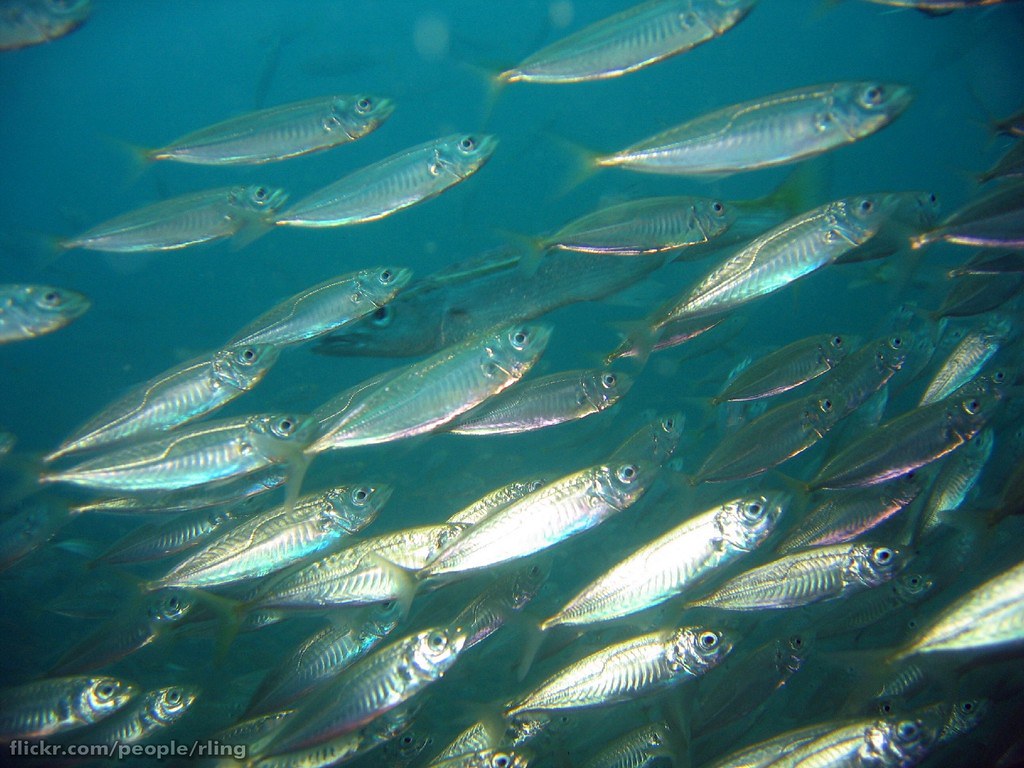
The species managed under the CPS FMP are Pacific sardine, Pacific mackerel, jack mackerel, northern anchovy, and market squid. Krill is included in the CPS FMP, but is a prohibited harvest species. In addition, there are two species classified as Ecosystem Component species (jacksmelt and Pacific herring), which are not subject to management measures.
Pacific sardine
The directed fishery for Pacific sardine has been closed since July 1, 2015, because the estimated biomass has been below the Cutoff value of 150,000 metric tons. The April 2019 Pacific sardine stock assessment indicated an estimated biomass of 27,547 metric tons, which is below the overfished threshold of 50,000 mt. NMFS declared the stock overfished in June 2019. The Council adopted a rebuilding plan in September 2020 which was approved by NMFS in June 2021.
There are incidental allowances for Pacific sardine harvested in other CPS and non-CPS fisheries. Small-scale (‘minor directed’) and live bait fishing can also take place, subject to annual catch limits and management measures. Each April, the Council sets the harvest specifications and management measures for the next fishing year (July 1-June 30).
Pacific mackerel
Pacific mackerel is assessed every four years altering between a full assessment and a catch-only update. Annual specifications are set on a biennial basis. Each June of odd years, the Council sets the harvest specifications and management measures for the next two fishing years (July 1-June 30).
Central subpopulation of northern anchovy (CSNA)
In June 2021, the Council adopted a new framework for managing CSNA including triggers for re-evaluating harvest specifications. The framework (Figure 1 of Council Operating Procedure 9) includes period assessments as well as periodic checks of biomass estimated from survey work. Assessments are conducted every eight years, and both the catch levels and survey estimates are evaluated every two years to determine if adjustments to harvest parameters should be made or if the assessment schedule should be adjusted.
The Council first utilized the framework in June 2022 and recommended an ACL of 25,000 mt.
Jack mackerel
Harvest specifications for Jack mackerel were set when Amendment 13 was adopted in 2011 and are in place until changed by the Council. The OFL is 126,000 mt and the ACL is equal to the ABC of 31,000 mt.
Northern subpopulation of northern anchovy (NSNA)
Harvest specifications for NSNA were set when Amendment 13 was adopted in 2011 and are in place until changed by the Council. The OFL is 39,000 mt and the ACL is equal to the ABC of 9,750 mt.
Market squid
In 2001, legislation transferred the authority for management of the market squid fishery to the California Fish and Game Commission (CFGC). Legislation required that the CFGC adopt a market squid fishery management plan (MSFMP) and regulations to protect and manage the resource. In August and December of 2004, the CFGC adopted the MSFMP, the environmental documentation, and the implementing regulations, which went into effect on March 28, 2005, just prior to the start of the 2005-2006 fishing season on April 1.
The goals of the MSFMP are to provide a framework that will be responsive to environmental and socioeconomic changes and to ensure long-term resource conservation and sustainability. The tools implemented to accomplish these goals include: (1) setting a seasonal catch limit of 107,048 mt (118,000 st) to prevent the fishery from over-expanding, (2) maintaining monitoring programs designed to evaluate the impact of the fishery on the resource, (3) continuing weekend closures that provide for periods of uninterrupted spawning, (4) continuing gear regulations regarding light shields and wattage used to attract squid, (5) establishing a restricted access program that includes provisions for initial entry into the fleet, permit types, permit fees, and permit transferability that produces a moderately productive and specialized fleet, and (6) creating a seabird closure restricting the use of attracting lights for commercial purposes in any waters of the Gulf of the Farallones National Marine Sanctuary. Under this framework, the MSFMP provides the CFGC with specific guidelines for making management decisions.